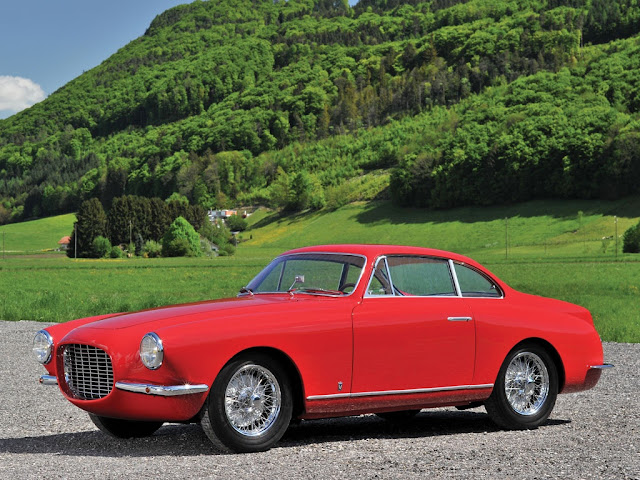1954 Fiat 8V Coupe
Seller's description
Chassis No.
000047
000047
Estimate:
$1,100,000 - $1,400,000 US
$1,100,000 - $1,400,000 US
115 bhp, 1,996 cc OHV V-8 engine, four-speed manual transmission, front and rear independent coil-spring suspension, and four-wheel hydraulic drum brakes. Wheelbase: 94.5 in.
- Fiat's 1950s supercar; stunning Vignale coachwork
- Displayed at the VII Concorso d'Eleganza di Roma in 1954
- One of the few surviving 8Vs with its original engine
Of all the famed Italian automakers, Fiat is not normally recognized as a builder of lavish, coachbuilt grand touring cars. The Italian automaker's first engines were four-cylinder units, often of gargantuan proportions. Fiat produced its first six-cylinder engine in 1907 and even a V-12 from 1921 to 1922. However, it was not until 1952 that Fiat would produce an engine with eight cylinders, and the chassis and bodies it resided in were just as special as the engine.
This 8V model, or Otto Vu in Italian, was built for two years only, in 114 examples, and it remains one of the marque's most legendary motor cars to this day. It was the star of the Geneva Salon in March 1952, and it goes without saying that this new Fiat got lots of attention from the motoring press. Road & Track called it the biggest surprise of the year, and The Motor remarked that the last thing which had been expected from Italy's largest car factory was a truly streamlined 2-seater saloon. With its potent new powerplant, which was clothed by bodies designed by the world's finest coachbuilders, everyone knew that this was truly a special automobile in every sense of the word.
CHASSIS NUMBER 000047
The distinctively handsome Vignale-bodied Coupe shown here, chassis number 000047, was originally exported to Turin on June 11, 1953, finished in green. The design is distinguished by its flared rear fenders, forming finned flying buttresses on either side of the deck lid and inset rear window; a distinctive oval radiator opening flanked by chrome bumperettes (echoed in the rear) and carrying a simple egg-crate insert; and delicate chrome trim around the doorsills and windows. Features of the car, including the round headlights and the design of the front fenders, are echoed in other Vignale designs of the period, including OSCAs and Ferrari 375 Americas. Low windows and a high beltline exaggerate the power and personality of the lines. The interior is understated, with pleated leather bucket seats facing a dashboard with a full complement of simple round Veglia gauges.

Comments
Post a Comment